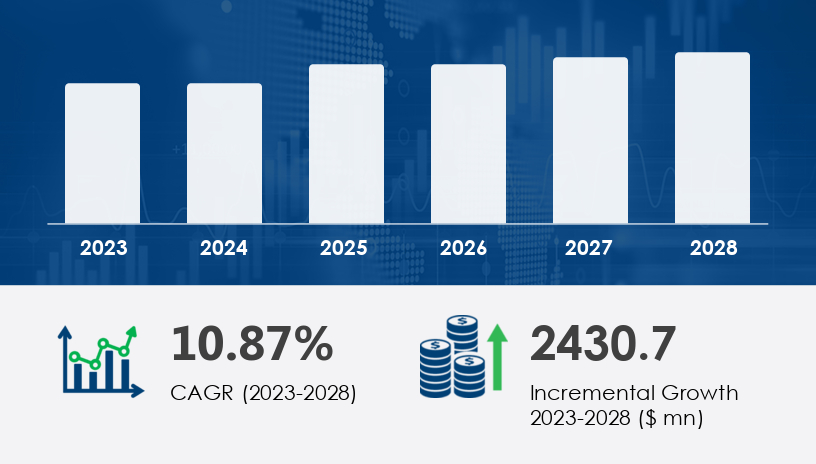The gluten-free pizza crust market is set for substantial growth, with projections indicating an increase of USD 2.43 billion at a CAGR of 10.87% between 2023 and 2028. This expansion is fueled by rising consumer awareness of celiac disease and gluten intolerance, which drive the demand for alternative pizza crust options. Consumers are increasingly opting for organic crust and conventional crust variants due to their health benefits and suitability for restrictive diets.Market expansion is further bolstered by the shift towards online sales and the sustained presence of offline retail channels, including supermarkets and hypermarkets, bakeries, franchise outlets, and pizza outlets. This increasing consumer demand highlights a growing preference for gluten-free options across diverse retail formats.

For more details about the industry, get the PDF sample report for free
Conventional
Organic
Offline
Online
US
Canada
Germany
UK
Italy
China
India
Brazil
South Africa
Growing demand for gluten-free food products – The increasing prevalence of celiac disease and gluten intolerance has led to a surge in demand for gluten-free pizza crusts, made from alternatives such as rice flour, almond flour, potato starch, and tapioca starch.
Expanding retail presence – The availability of gluten-free pizza crusts in supermarkets, bakeries, franchise outlets, and pizza chains is driving market growth, catering to a broad consumer base.
Rising preference for vegan pizza – Consumers are shifting towards plant-based diets, leading to greater demand for gluten-free pizza crusts as part of a broader trend toward healthy eating.
Innovation in ingredients and flavors – Manufacturers are expanding their product lines with exotic flavors and enhanced textures, appealing to a wider demographic, including millennials and health-conscious consumers.
Stringent regulations and risk of product recalls – Compliance with food safety standards such as Codex Alimentarius and FDA regulations is critical, as failure to meet gluten-free certification can lead to product recalls and loss of consumer trust.
The gluten-free crust market is growing rapidly due to increasing consumer demand for health-conscious food options. Individuals with celiac disease and gluten intolerance are driving demand for organic crust and conventional crust, catering to specialty diets and various dietary preferences. The popularity of vegan pizza has also surged, pushing manufacturers to use natural ingredients like rice flour, tapioca flour, and potato flour to enhance ingredient purity and crust freshness. The market spans multiple offline retail channels, including supermarkets, hypermarkets, convenience stores, foodservice, bakery outlets, and retail chains, as well as pizza outlets. The rise of e-commerce has made online sales a crucial factor, with brands focusing on targeted marketing, customer engagement, and transactional notifications to enhance accessibility and brand loyalty.
Get more details by ordering the complete report
Amy’s Kitchen Inc.
Authentic Foods
BFree Foods USA Inc.
Bob’s Red Mill Natural Foods Inc.
Cali’flour Foods
Chebe
Conagra Brands Inc.
DeIorio’s Foods Inc.
Dr. Schär
GGZ srl
Ittella International LLC
KSKT Agro Mart Pvt. Ltd.
Mr. Jim’s Pizza
Namaste Foods LLC
Nestlé SA
OGGI FOODS Inc.
Rich Products Corp.
The Essential Baking Co.
Tuli House
US Foods Holding Corp.
The market size for gluten-free pizza crust is expanding due to growing awareness of health benefits, such as low-calorie options, cholesterol-free formulations, and salt reduction for better heart health. Manufacturers are addressing cross-contamination concerns by ensuring minimally processed and nutrient-rich products. Additionally, sugar reduction and energy boost formulations are gaining traction among consumers seeking functional foods. A wave of product launches featuring organic options is meeting consumer preferences, while promotional offers drive sales across retail chains and pizza outlets. Brands are also enhancing ingredient purity through stringent quality control measures, ensuring compliance with health standards. As the market evolves, the role of market size, foodservice, and supermarkets in distribution continues to grow, reinforcing accessibility and ensuring a seamless shopping experience across both online and offline platforms.
Safe and Secure SSL Encrypted